Everything you need to know about Lupini beans, plus an easy lupini bean recipe – just how it’s made in the streets of Amman!
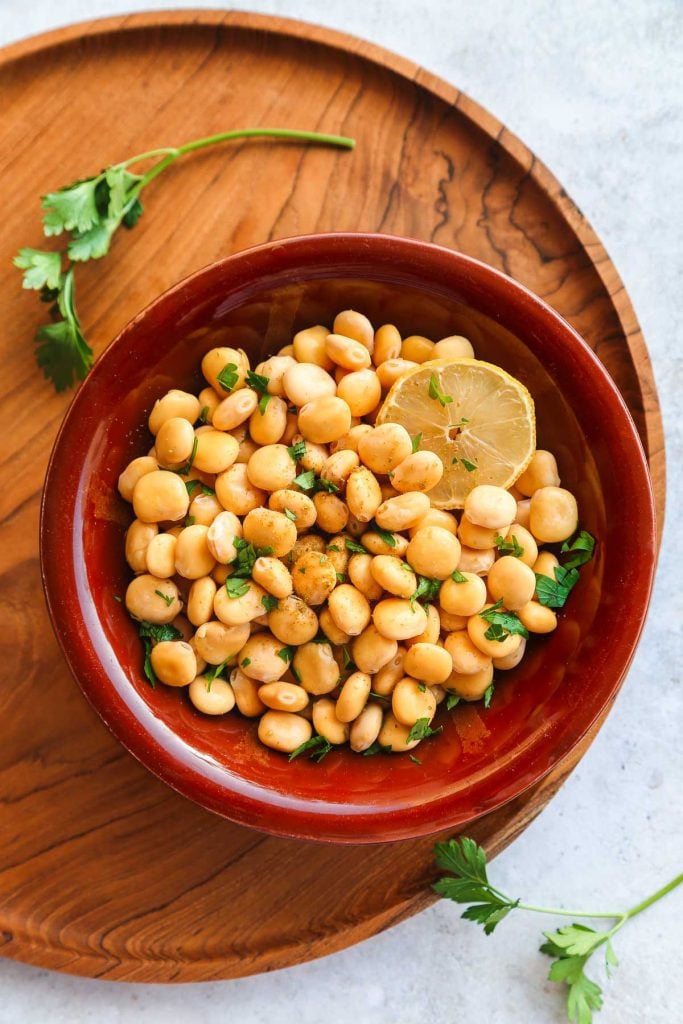
What are lupini beans?
Lupini beans or lupin beans (Turmus in Arabic) are very healthy beans that can be served as snacks or antipasti. They’re very delicious and also really good for you!
These beans are legume seeds. They are popular in Mediterranean countries such as Greece and Italy, and they’re also very well known in Middle Eastern countries like Jordan and Egypt. Usually served as snacks on their own or as antipasti, and popular street food in the Middle East.

In Italy, lupini beans are mixed with olives to be served as snacks at Christmas time. They are also added to hot and cold salads (scroll down to see the picture).
In Jordan, Turmus is usually sold dried in the supermarkets. To prepare it, it needs to be soaked in water and then cooked until it’s semi-soft. it’s quite starchy and smells a little bit like potatoes.
Lupini beans are easy to find in the UK and in the US, I’ve seen them sold dried and canned in brine in oriental shops. I also ordered them from Amazon a few times.
Benefits of lupini beans
- These beans are high in protein (40%), and fiber (40%). So every 100 grams of cooked lupini beans, contain around 40 grams of protein.
- These beans aid in resorting and building cells, tissue and muscle in the human body.
- As Lupin beans are high in fiber, they are able to lower the cholesterol in the body and clean the blood vessels. So they’re also good for the heart.
- And finally, these beans are packed with antioxidants and can help prevent inflammation.
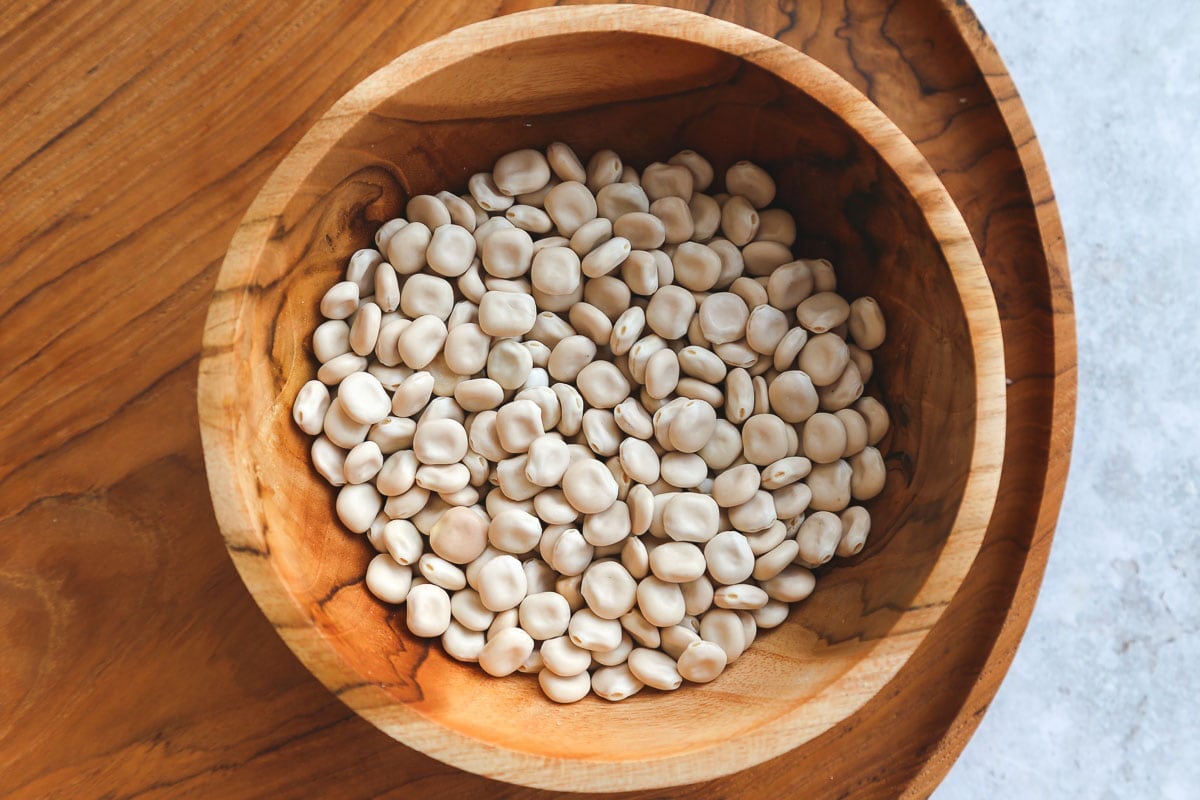
There are 2 kinds of dried lupini beans:
- There’s a bitter variety that takes longer to prepare as it needs to be soaked for several days in water, and water needs to be changed every few hours or at least every day. Then the beans need to be cooked, and if they’re still bitter then they need to be soaked again in water.
- The other kind of lupin beans is sweet, these beans are not literally sweet but they’re not bitter either (the variety is just called sweet). They can be prepared quickly, by just soaking them in water for a few hours, then they’re cooked for 30 minutes or until they’re sort of soft and yellow in color.
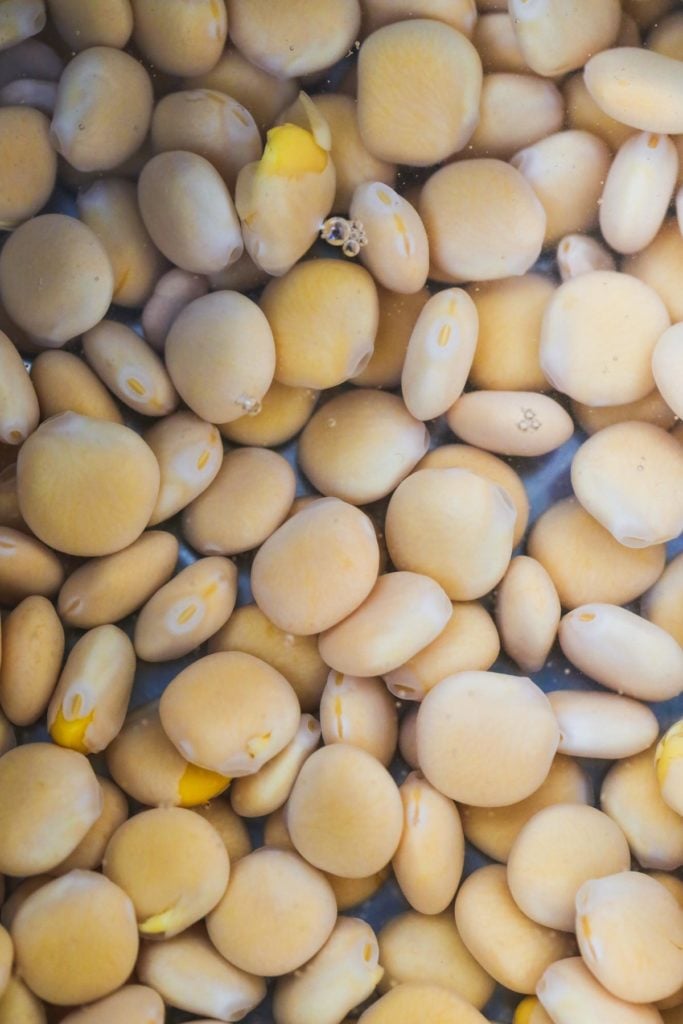
How to cook dried lupini beans?
You can either cook Lupini beans from dried in a pressure cooker or over the stovetop. I prefer the pressure cooker method (I love using my Instant Pot!) as it saves a lot of time, and it’s just more convenient as it means that I won’t have to keep checking on the beans.
- Depending on which type of Lupini beans you have, soak them in cold water (if you’re using the bitter kind then soak for days and keep changing the water, if you’re using the sweet variety then soak for a few hours of overnight and then cook).
- Rinse the Lupini beans, transfer to a pot or pressure cooker and cover with the lid. If you’re using a pressure cooker, then pressure cook on high for 20 minutes. If you’re cooking them over the stovetop then they will take about an hour.
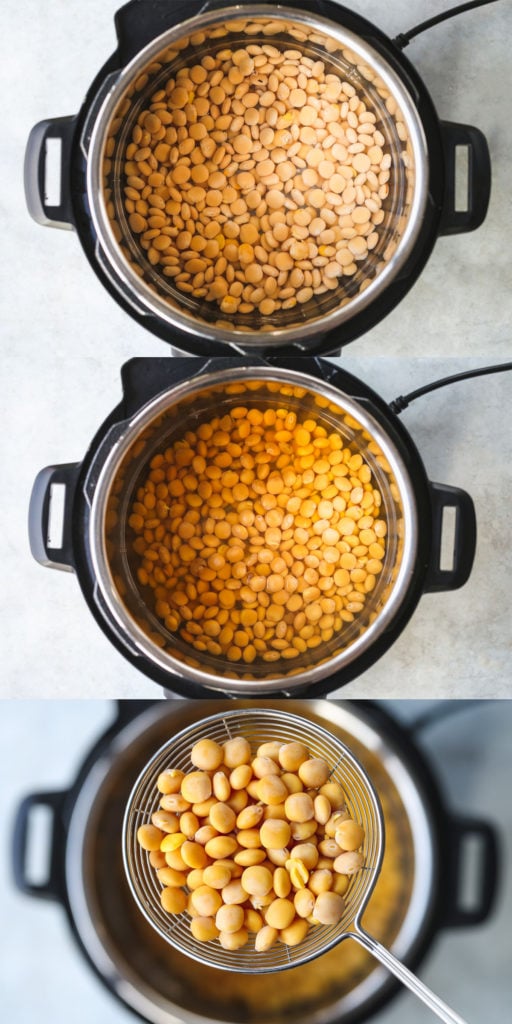
Middle Eastern Lupini Beans “Turmus”
In the Middle East, you will see many street vendors selling these tasty beans that are perfectly cooked, then seasoned with cumin, salt and lots of lemon juice. Many people cook beans at home in the Middle East. They are also usually paired with beer (like bar nuts) as they make a great snack.
The beans are first soaked in water, and then cooked in boiling water until they’re soft enough to eat. Ground cumin is a very important ingredient, as lupini beans can cause bloating to some people and it’s believed that ground cumin can prevent bloating. After the Turmus is cooked, add lemon juice. Then sprinkle with ground cumin and salt.
Tip!
The beans are eaten cold and are stored in the fridge in an airtight container for up to 3 days.
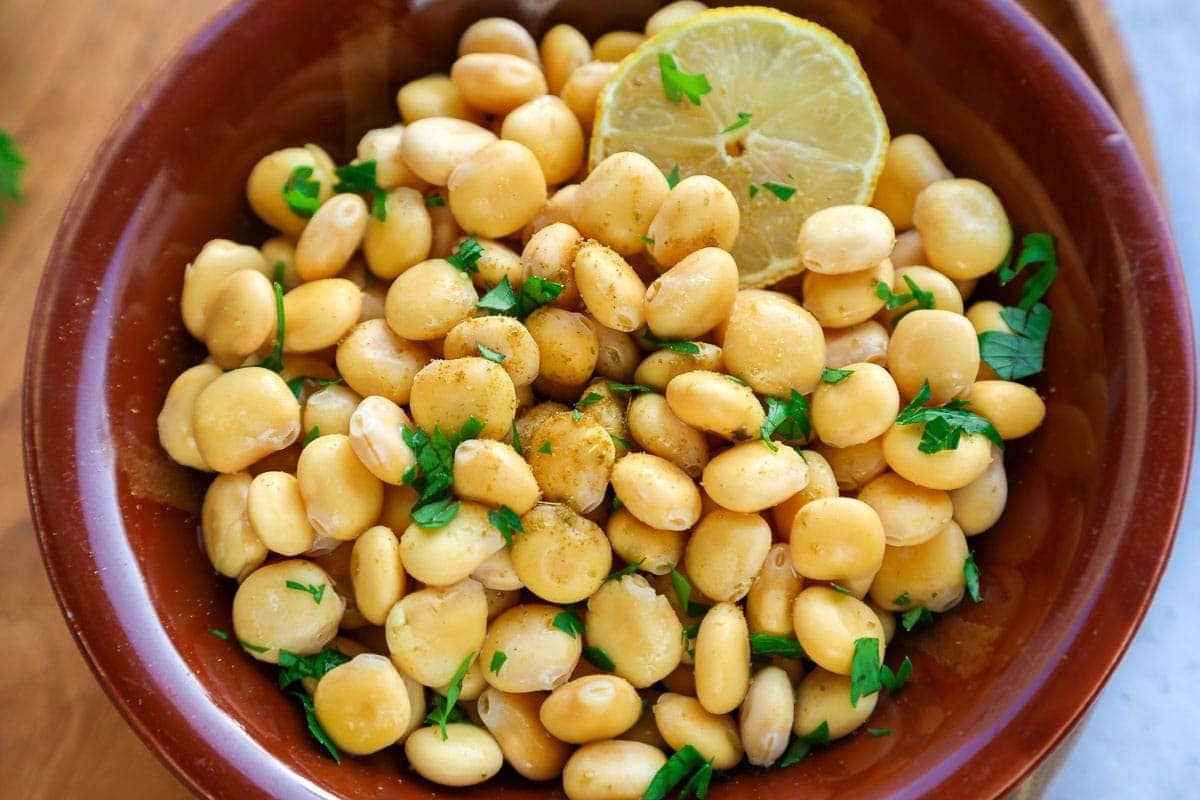
How to eat lupini beans?
Lupini beans are eaten one by one, by tearing the skin with your teeth and then popping the seed into your mouth.
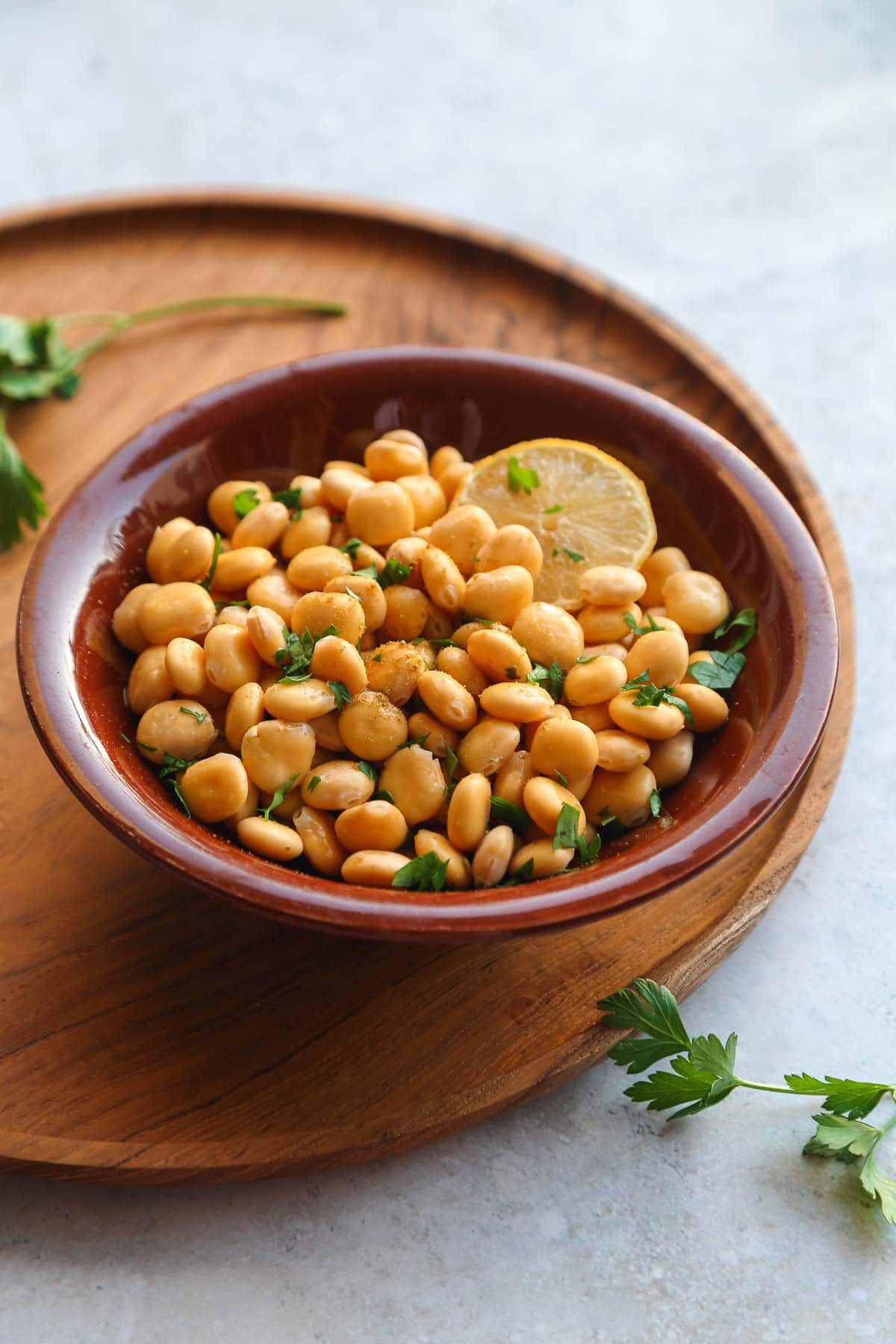
The beans are also used in making lupini flour, and even tofu!
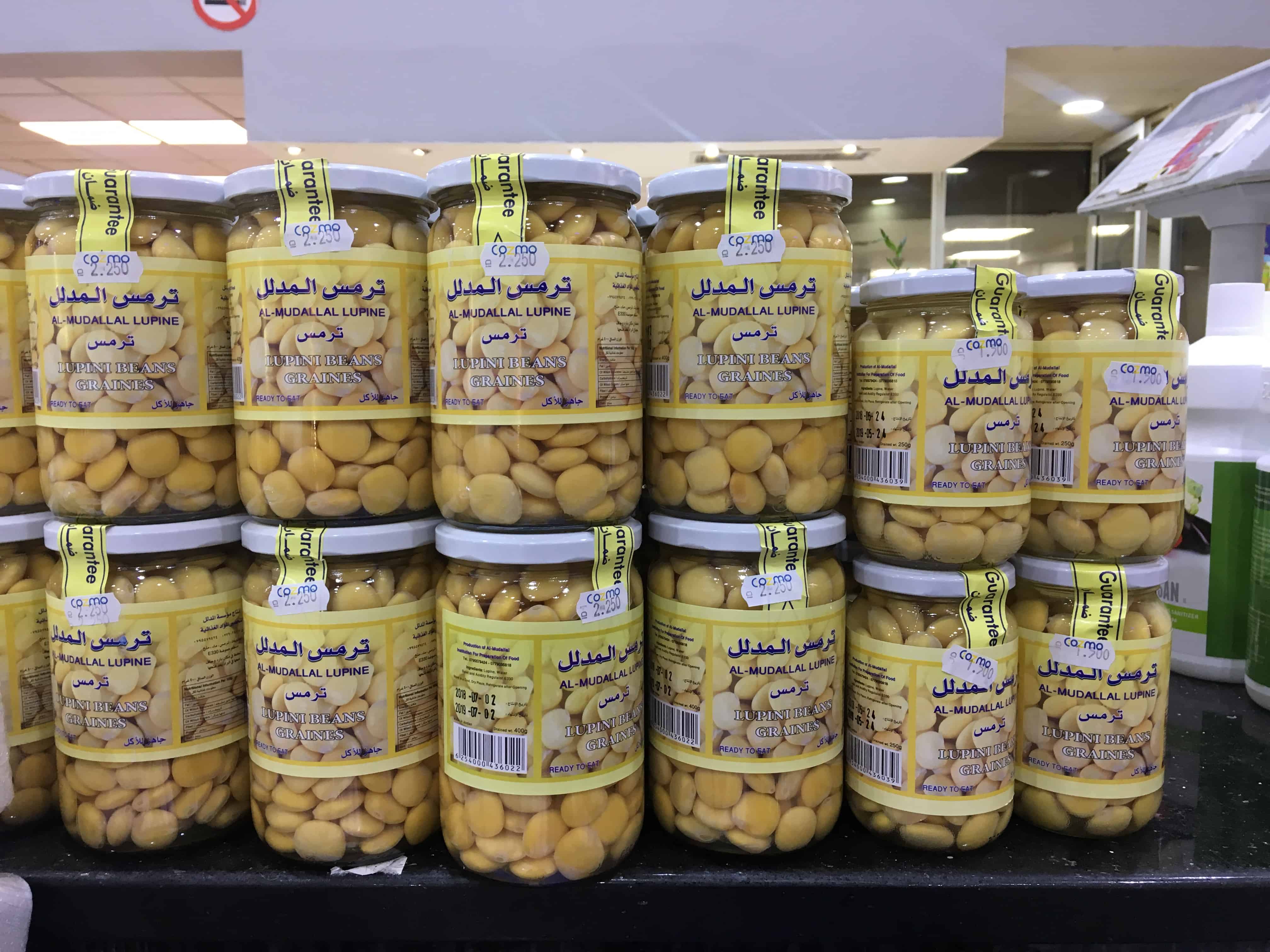
You can buy Lupin beans pickled, or canned in brine. They are also sold as dried beans.
Italian Lupini beans and olives
As I mentioned above, lupini beans are also popular in Italy. They’re usually served at Christmas time as antipasti or snack. Often mixed with black or green olives with pits traditionally, however, I sometimes use pitted olives which makes my life easier.
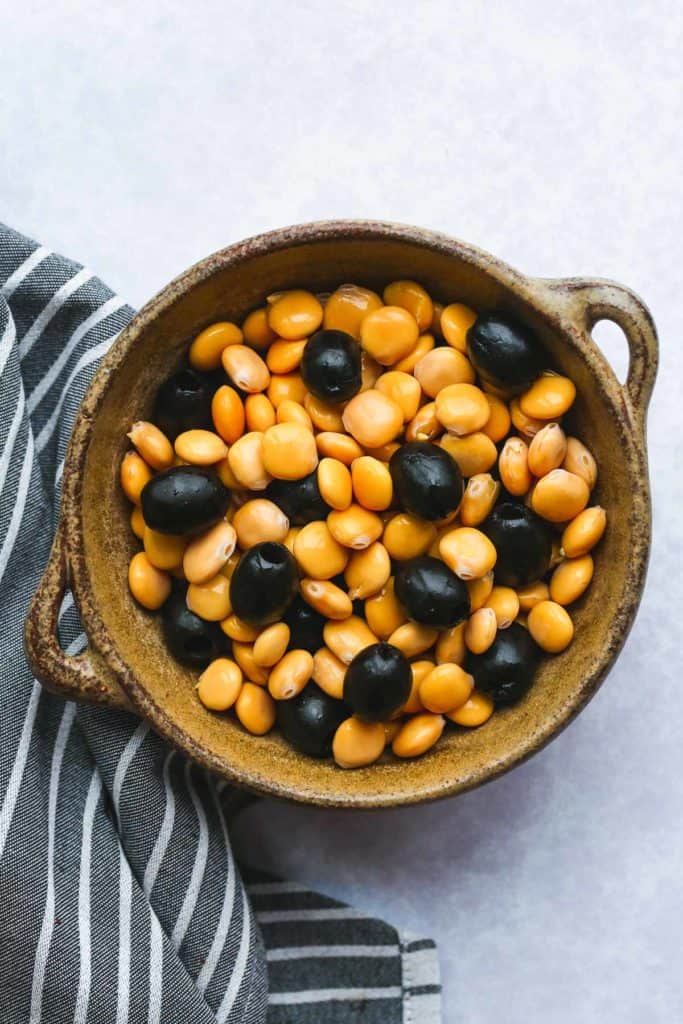
I also recently found out that Lupini beans are eaten as a snack in Spain (known as chocks or altramuces), and in Portugal (known as tremoços).
How to store dried lupini beans?
Dried beans can be stored for up to 24 months in an airtight container, stored in a dry place at room temperature.
Did you make this? Be sure to leave a review below and tag me on Facebook, Instagram, or Pinterest!
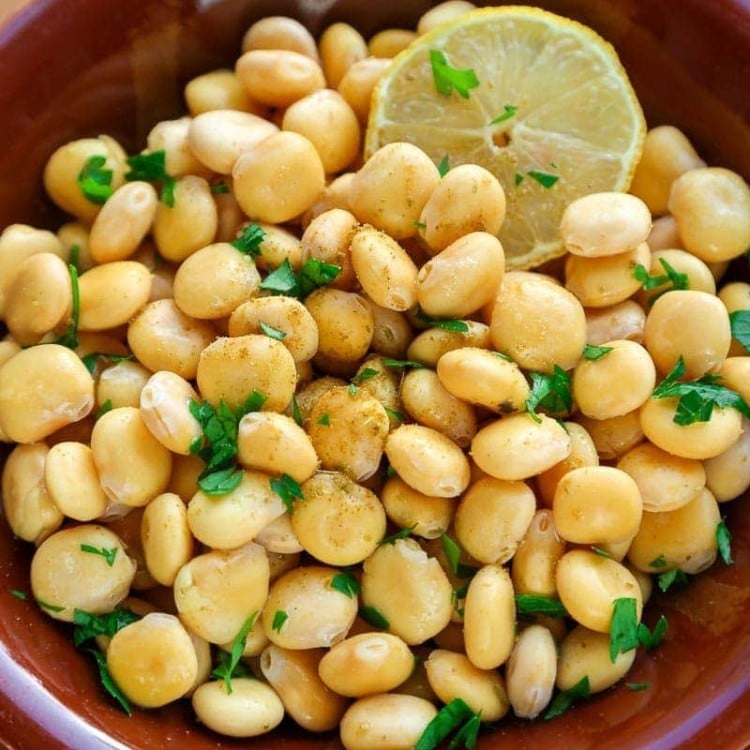
Middle Eastern Lupini Beans
Ingredients
- 3 cups (540g) lupini beans dried
- 1 lemon juiced
- 1 tablespoon ground cumin
- 20 grams parsley chopped
- 1 teaspoon salt
Instructions
- Soak lupini beans in water for a few hours.
- Add to boiling salted water, and cook until they’re soft enough to eat. This should take around 30 minutes but it depends on the variety of the lupini beans you’re using.
- Rinse the beans, then add lemon juice, ground cumin, and salt. Give it a good mix so cumin and salt and well distributed.
- Sprinkle with chopped parsley and serve!
Notes:
- Lupini beans used in this recipe are “sweet” lupini beans that don’t require to be soaked in water for days. If you’re using a bitter variety, then you will need to soak them in water for days and keep changing the water twice a day.
- If you are allergic to peanuts, double-check that you’re not allergic to lupini beans as well before eating them.
- The beans are eaten cold and are stored in the fridge in an airtight container for up to 3 days.
Nutrition Information
This website provides approximate nutrition information for convenience and as a courtesy only. Nutrition data is gathered primarily from the USDA Food Composition Database, whenever available, or otherwise other online calculators.
© Little Sunny Kitchen

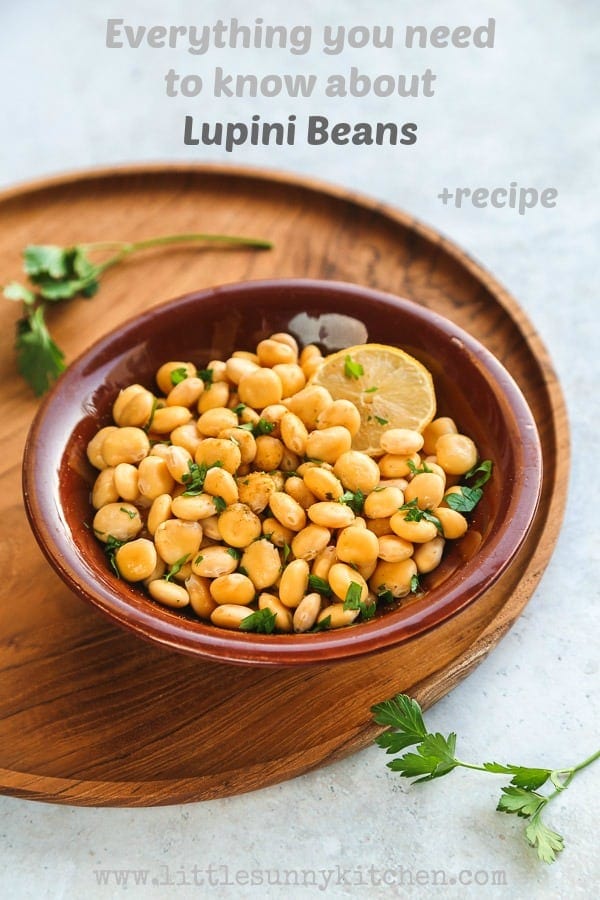
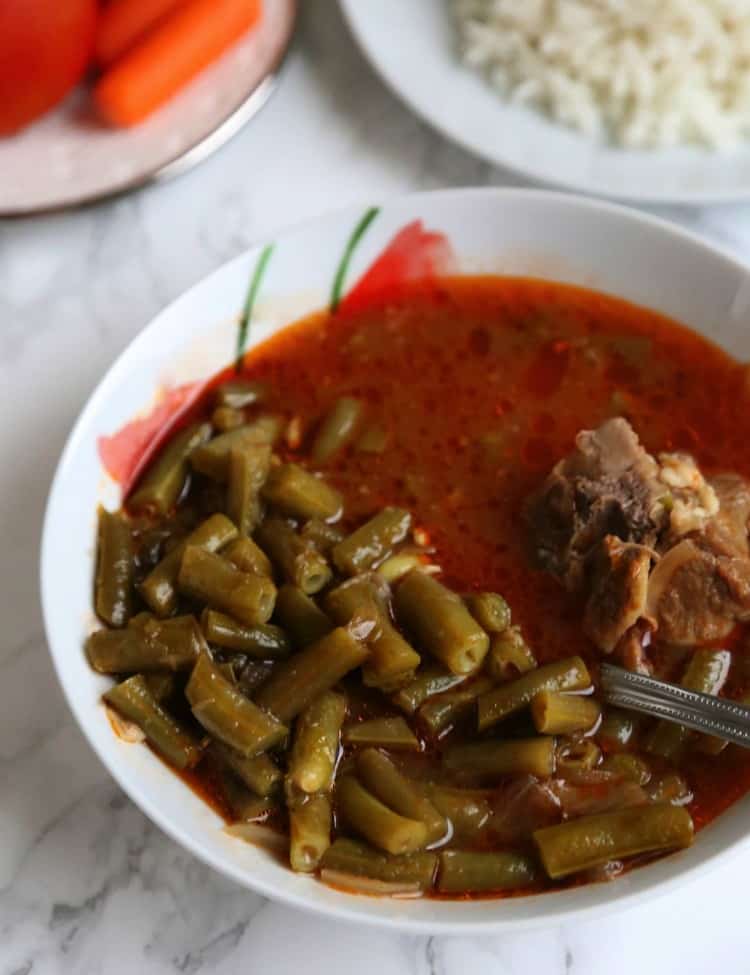
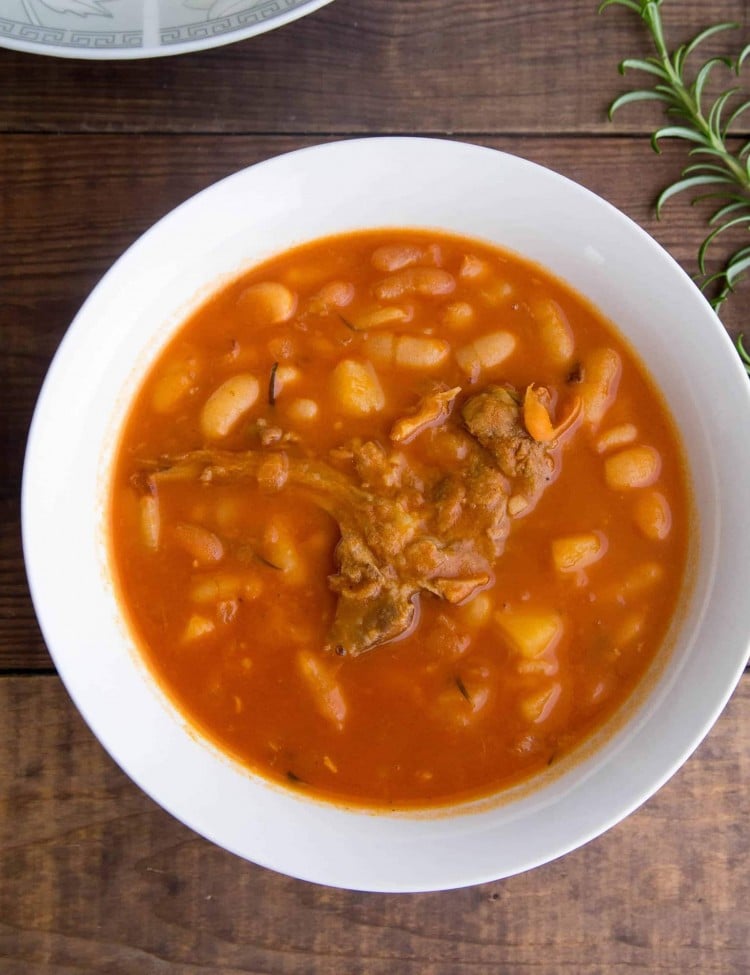
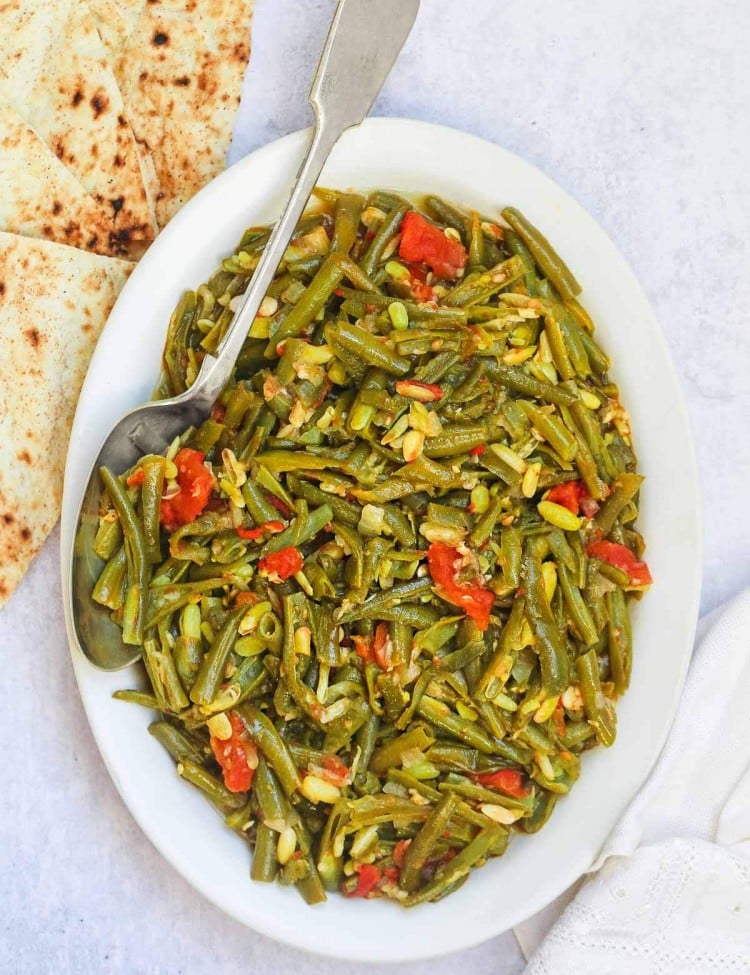
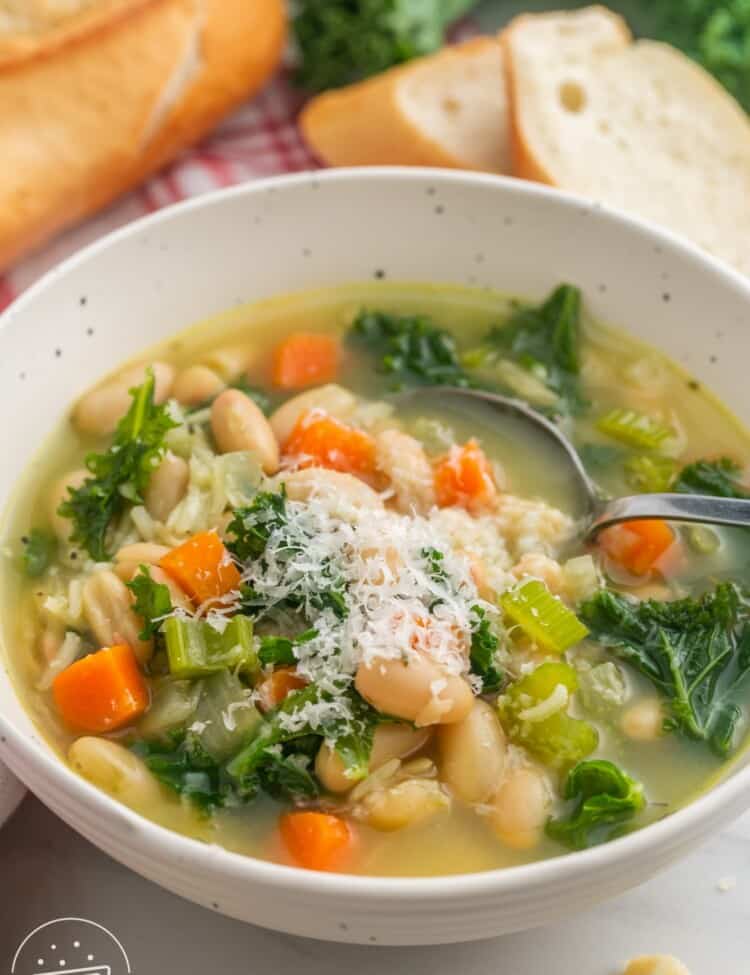
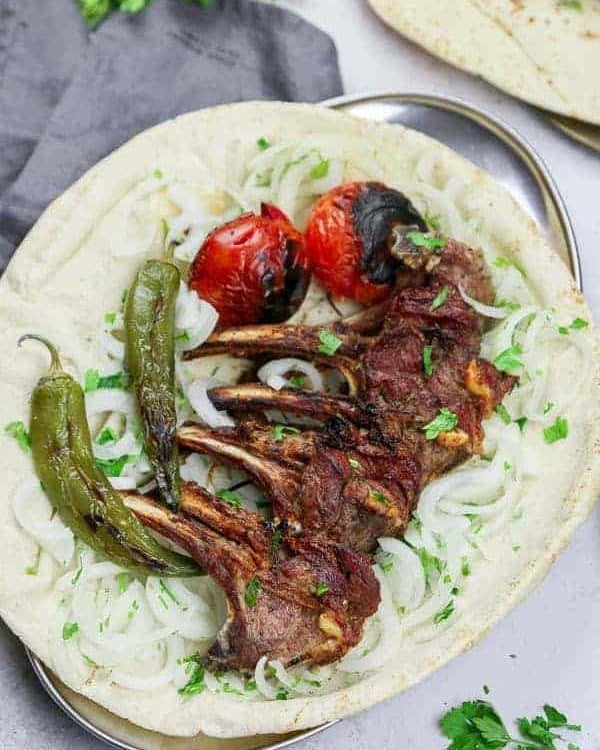
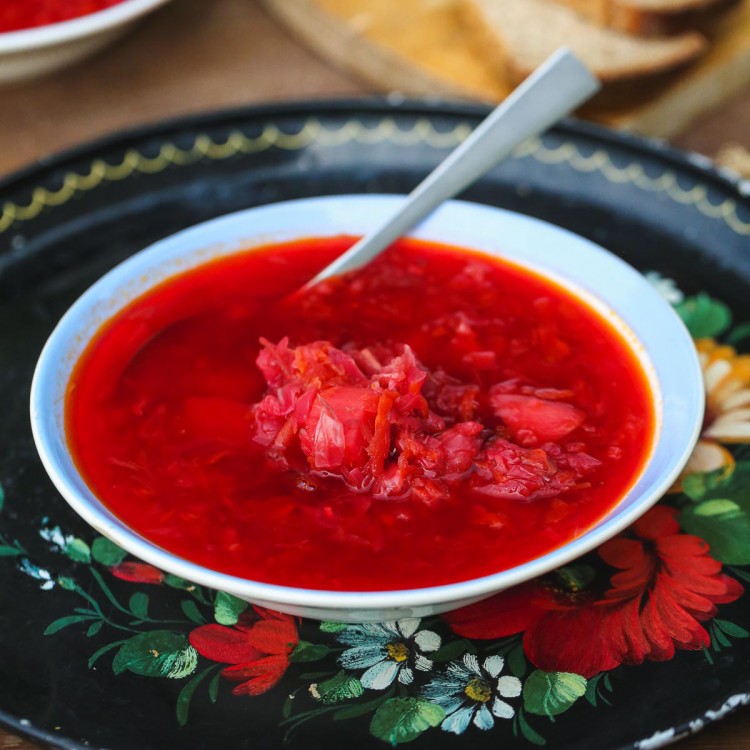
Maureen says
Hi there, I look forward to trying this recipe. I just bought some dried lupini beans and learned from the seller that they are the bitter variety. How many days would you recommend soaking them? (I’m not sure what is meant by “several”). Thanks for your help!
Diana says
Hi Maureen, I would soak and keep changing the water for probably 3 days and then have a little taste and see if they’re still bitter and need to be soaked for longer.
Bubba Gump says
I have been shopping for an accurate nutritional label for this kind of beans. The carb and fiber numbers vary by a huge amount. For example, the Cento Brand of Lupini Beans shows that they have 6g of carbs per serving and 6g of fiber which would mean 0 net carbs, but other brands show as much as 26g of carb and 3g of fiber. Europe and the US are different in how they report carbs and fiber. I also wonder if food packagers are lying or just using inaccurate information they found online. Does anyone have any input on this?
Janis says
Bubba Gump, I have the same question. Unico brand in Canada has a nutritional value which amounts to almost zero net carbs, yet in the US the net carbs count is very high. I am so confused!
Analisa says
How do I know which lupini beans I am buying? How does one tell the difference between the two types?
Diana says
Usually, it says on the package, sweet lupini beans or bitter (they look the same though!). The sweet ones are boiled once and that’s it, the bitter ones will have to be soaked a few times before they’re boiled.
Kim says
I must recently learned about Lupini beans as I was searching for a recipe for low carb. I bought the canned in brine, ready to eat variety. Even after cooking with other foods they are still hard…are they suppose to be hard and should I cook them longer? Thanks
Diana says
That’s really strange, they’re not supposed to be too hard. They’re not as soft as canned chickpeas though, they’re more like soaked almonds if you’ve ever had them?
Kim says
thanks for replying!
I guess thats how they are supposed to be then…wish they were a little softer but I still like them. Maybe I will save them for snack time instead of as a side. Kind of like eating a handful of nuts!
Diana says
That’s how we usually eat them, as a snack rather than a side. In Italy, they are added to salads. But personally, I’ve never had lupini beans with food.
Alisha Rodrigues says
What an interesting post. I’ve never tried lupini beans before but after reading this, will surely give it a try. Looks very interesting !!